Each of these vibrant, colourful books comes from an independent publisher. Helen Vivienne Fletcher finds a lot to love about them.
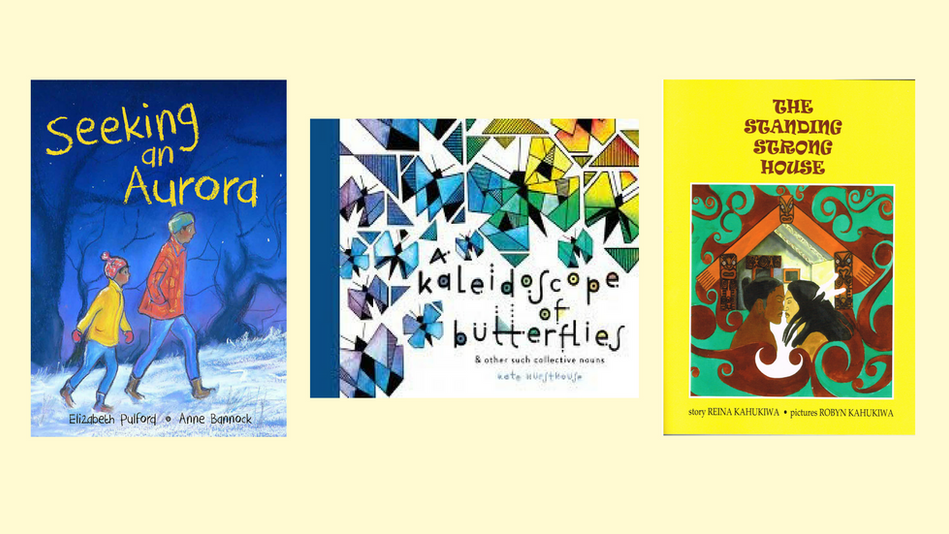
A Kaleidoscope of Butterflies & Other Such Collective Nouns, by Kate Hursthouse
A Kaleidoscope of Butterflies & Other Such Collective Nouns is a beautifully unique book, featuring vibrant illustrations and gorgeous hand-drawn typography. The collective nouns featured range from the more commonly known “pride of lions”, to the less familiar “loveliness of ladybugs” and “flamboyance of flamingos”.
Naturally, the illustrations display the groups of creatures in question. Elements of the names for the collective nouns are cleverly incorporated, whether it be a lounge of lizards lounging by the pool, or a tangle of octopuses with tentacles tangled up in both the lettering and each other.
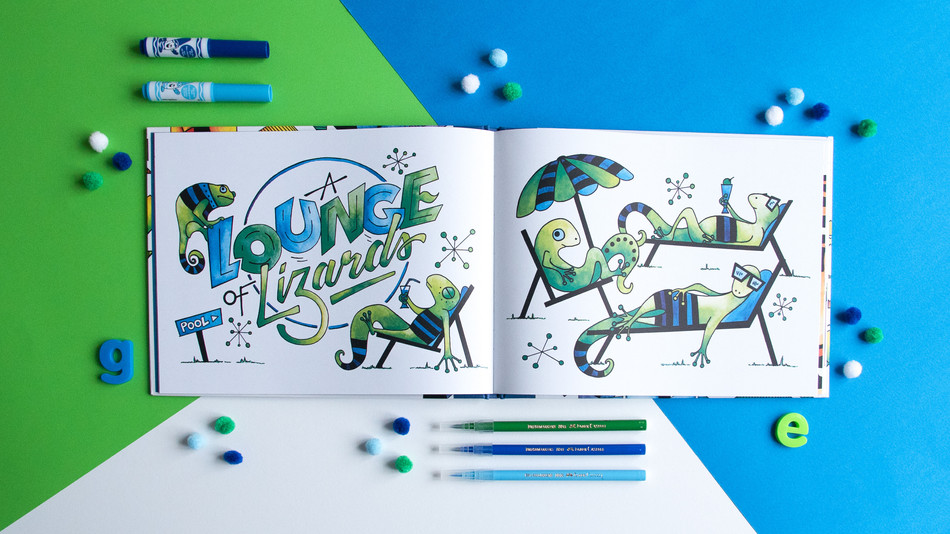
This a book I found myself picking up again and again, poring over the illustrations each time. The level of detail meant I found something new in every reading, and could quite happily stare at a single page for some time.
My one criticism would be that the blurb does not entirely reflect the nature of the book: ‘Follow us on our adventure as we discover 25 different colourful animals and their wonderful, wacky group names.’
This is not a bedtime read-aloud, as it doesn’t have a storyline as such. The word ‘adventure’ suggests more of a narrative than you will find in this particular book. The book is a very well-produced, visually appealing list of these collective nouns – and learning the unusual names for these groups is fascinating.
This book would make a great gift for both children and adults. I’d recommend it particularly to older children, especially those interested in language and nature. Though the colourful pages, and range of creatures would also make this book appealing to younger ages.
Adults will simply be delighted by the stunning artwork and enjoy the clever intricacies of each page. It’s certainly going to have pride of place on my coffee table for some time to come.
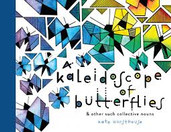
Seeking an Aurora, by Elizabeth Pulford and Anne Bannock (OneTree House)
Seeking an Aurora follows the story of a young boy, woken late at night to go on an adventure with his father. He learns he is going to see an aurora, but struggles to understand what exactly that is until he sees it for himself.
The illustrations are really the star of this book. The strong colours of the aurora – reds, blues, purples and greens feature strongly, even before we see the aurora itself. The shadows and shading on each page mimic the patterns of light, creating beautiful effects. The aurora is finally shown in two full page spreads of swirling colours, with the text twisting its way across the pages in amongst the artwork. This demonstrates the nature of the phenomenon brilliantly, in a way that words alone could not.
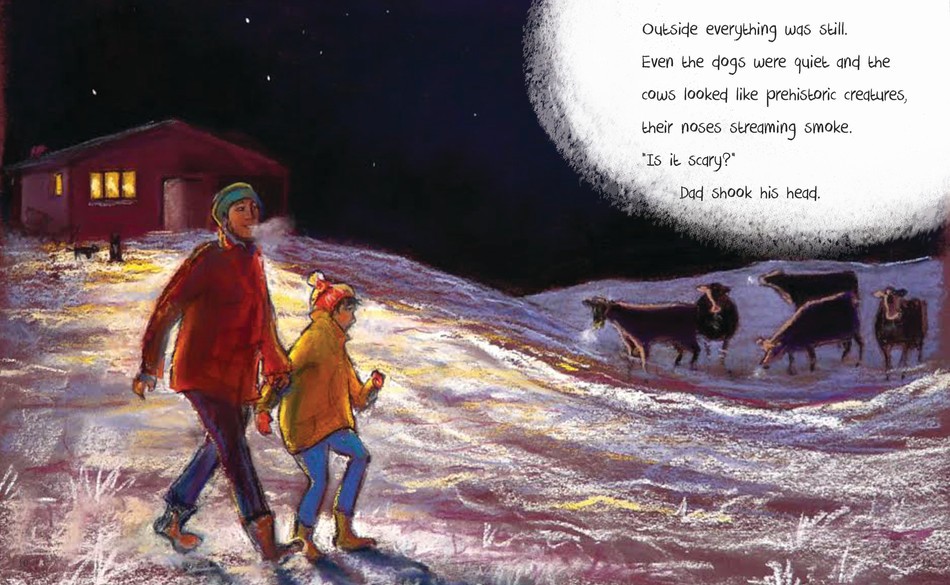
While the illustrations are what first caught my attention, the language in this book is by no means to be overlooked. The text is very visual also, with beautiful descriptions like:
‘…my breath huffed little ghosts while high above sailed the sky, a ship of shivering stars.’ and
‘…the moon glinting between the trees like a curved splinter of glass.’
Though our young narrator is kept in the dark as to the exact nature of the aurora for much of the book, the final page contains an easy to understand scientific explanation of the phenomenon. Keeping this information to the end works well, as the story and illustrations will capture the interest of young readers first. I think children will be more open to learning about auroras, after reading the story, than they would be if just presented with this information in isolation.
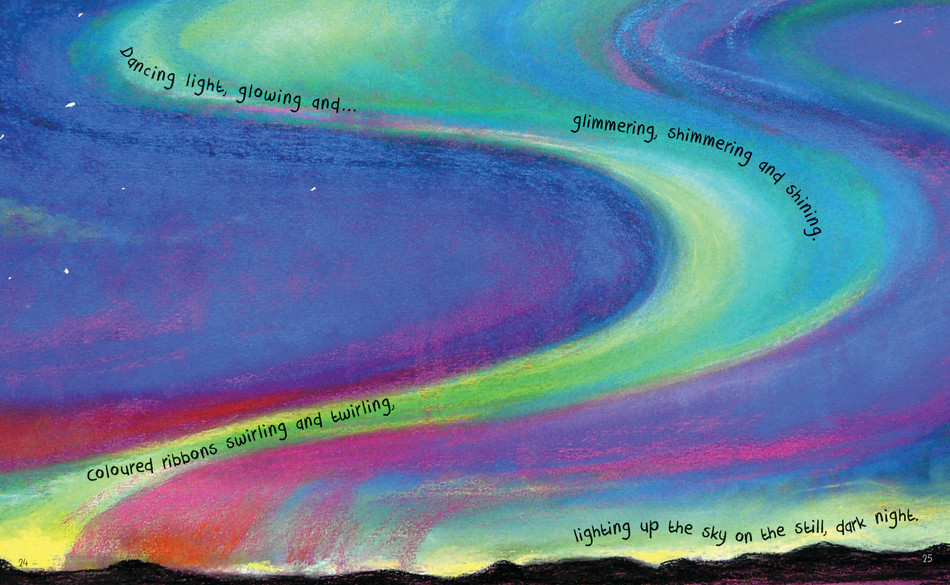
This would make a lovely book to read aloud to young children, as the text has been carefully crafted to sound pleasing. Text and illustrations work together in harmony to create stunning images for the reader to appreciate, making for a pleasant reading experience for adults as well. Seeking an Aurora would also be suitable for older children, reading independently, and would make a great introduction to studying auroras or other similar topics at school.
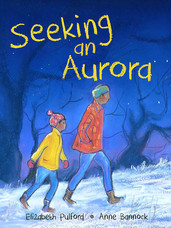
seeking an aurora
By Elizabeth Pulford and Anne Bannock
Published by OneTree House
RRP $27.00
The Standing Strong House, by Reina Kahukiwa and Robyn Kahukiwa
The Standing Strong House takes us on a journey spanning several centuries. We start hundreds of years ago with Kahurangi, a leader of the Ngāti Tū Māia people, and end with Jericho, a young homeless boy in modern-day New Zealand. Tying the generations together is their whare – standing strong through the years – and Awatea, a white tūī.
The Standing Strong House contains a wealth of information. Topics covered include details about the names and significance of parts of a whare, elements of Māori culture, and birds and plants native to New Zealand. Modern-day social issues, such as homelessness, are addressed as well, with the story of Jericho and his family living in their car.

While the range of subjects and themes discussed in this book make it a valuable and informative resource, it does mean this is a very text-heavy book. It sits uncomfortably as a picture book – not really the type of book you would curl up with as a bedtime story, with the text too long to be comfortably read aloud in one sitting. Even for a sophisticated picture book, intended to be read independently by older children, I suspect the dense blocks of text on each page may make this book less accessible for children.
While the wonderful illustrations are well suited to the story, and add to the overall experience by giving a visual to some of the information provided in the text, I wondered if this book might have been better explored as an illustrated chapter book. Many of the characters’ storylines are truncated, as the narrative moves on to the next generation. I would like to have seen them given more room to breathe in a different format. Regardless, this book has a great message about family, culture and communities, that will touch the hearts of readers.
The story is written primarily in English, but words and phrases in te reo Māori feature frequently throughout. A glossary of Māori words is included, but the story is skilfully written in such a way that the meaning is easily derived from the context. Even those completely unfamiliar with te reo Māori will be able to enjoy the story without struggling to understand the meaning. Those already learning te reo, or simply wishing to expand their vocabulary, will find this a useful resource.
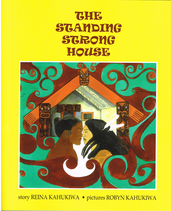

Helen Vivienne Fletcher
Helen Vivienne Fletcher is a widely published children’s and young adult author, storyteller and award-winning playwright. She has written an impressive collection of work for everyone from preschoolers to adult readers. Spanning a variety of subjects, Helen’s writing doesn’t shy away from the gritty parts of life. Diving into the depths of disability, the gravitas of grief or the thrill of the mysterious, her stories are sublimely suspenseful whether on the page or stage. Connecting the real world with flights of fantasy, she creates fast-paced fiction to delight and draw in readers and audiences across Aotearoa.



